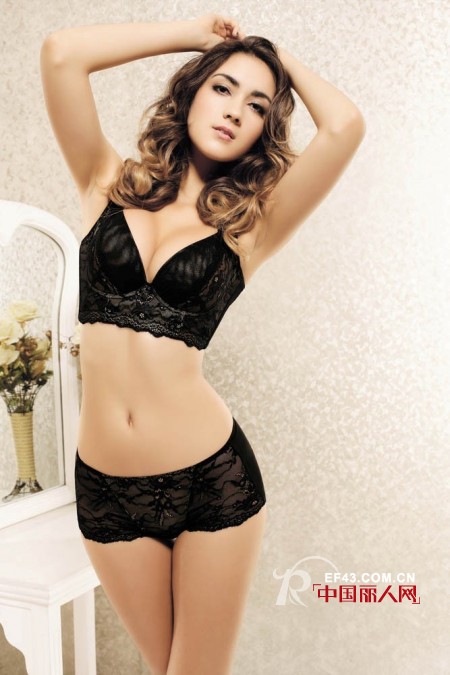In recent years, the adjustment of underwear in the popular among fellow women, a female consumer demand for high-quality products. However, what is "conditioning underwear"? Why do you need to wear adjustable underwear? Adjustable underwear in the end where the function?

With the world's first perfect slimming lingerie as the fist product, Alviea functional lingerie brand introduces the concept of functional body sculpting into the field of lingerie, elevating lingerie into professional measurements to create standard measurements and building a perfect body of secret weapon, With the body shape repair series assisted stereotypes, to achieve the perfect measurements results, completely solve the problems that bother women for many years.

In fact, the birth of adjustable underwear is actually a product of the trend of the times. When the quality of human life has improved to a certain extent, the demand for goods has also been relatively improved. Therefore, in addition to being ashamed and warm, clothes have also developed a variety of functional requirements that prevent the appearance of varicose veins, such as aesthetics and decoration. , And even added to the material acid, vitamins and so on. The invention of the adjustable underwear is a high-tech product developed based on the principles of fat, medicine, human body mechanics and professional underwear design. After a sophisticated calculation and design, it can adjust the body, focus, fixed fat, and correct posture, which is different from the general underwear lingerie is only to tighten the fat, while the underwear can be adjusted for the body is not ideal Make adjustments, and make the ideal person to continue to maintain a beautiful figure.
Candles have been an important part of human society for thousands of years. Originally, the only way to possibly see once the sun went down, was from either torches, fires, or candlelight. Torches were not safe indoors, and walking from room to room carrying a portable fireplace with you was not practical or possible. Therefore, candles lit the way. Everything was done by candlelight once the sun set, from carrying out one's chores, reading, sewing, or even signing the Constitution of the United States.
Candles also had a useful purpose in early China. There, they actually invented a type of calibrated candle called a "candle clock" that was used for keeping time. Weights were inserted into the candle at precise locations, and when the wax melted to a certain level, the weights dropped into a container below and made a noise. Imagine what it would be like to have a candle alarm clock to wake up by (don't try to hit the snooze button), or to try to time your bread in the stove based on a candle clock?
Originally, candles were not made using the high quality of wax that we have today. Instead, they were made from whale fat in China. Later, Japan learned how to extract wax from squirrels (don't ask me how). In the Middle Ages, candles were frequently made from the fat of various animals, such as cows and sheep. The smell from manufacturing these types of candles, however, was so horrendous that several cities banned the manufacturing process. Instead, candles were soon made from beeswax, which had a less unpleasant odor. In 1850 paraffin became available commercially, and soon all candles were made from a type of paraffin.
Those who made candles and experimented with various types of materials were called chandlers (from which we get the word today "chandelier"). From the earliest of times, candle makers added scents and fragrances to produce the best Scented Candles. It started in China with the 'time clocks". Incense sticks were often inserted into the wax to add a wonderful aroma. In fact, sometimes the incense was added at particular intervals so that the change in fragrance, rather than the dropping of weights, indicated the change in time. Later, India also discovered the aromatic benefits of using a wax made from boiled cinnamon for their candles. Unlike the use of animal fat, which smelled horrendously during the manufacturing process, the use of cinnamon provided a relaxing and fragrant aroma.
In addition to experimenting with scented candles, some ingenious candle makers also attempted to create a smokeless candle. They understood what such an invention would mean....no more wick means no more flame! No doubt fires starting from candles were a fairly common. Thomas Payne was one such individual. In the late 1700's he attempted to invent a smokeless candle, but was not able to do so. Benjamin Franklin also started off as a candle maker before he began his political career, and experimented with various types of materials and methods for candle making. However, it would be centuries later before such technology would be pioneered and wickless candles would be available wide spread.
One reason for the delay of scented and wickless candles is because candles were put on the back burner once kerosene lamps were invented. Then, candles almost became completely extinct upon the invention of the light bulb later at the end of the nineteenth century.
However, in the 1980's and especially in the 1990's, the rebirth of the popularity of candles became an international phenomenon. This was due partly to their decorative value, but also to their ability to allow the stressed out, modern, over-worked homeowner an opportunity to create a relaxing environment using the aromatherapy of scented candles. At the same time, awareness over air quality and health conditions such as asthma and allergies led to the exploration for a more safe and healthy, environmentally friendly Scented Candle. Once again, the search for a flameless candle began, and once again, scent, or fragrance, became very important.
Scented Candles
Scented Glass Jar Candles,Scented Jar Candles,Scented Candle,Soy Scented Jar Candles
Hebei Seawell Import and Export Co.,Ltd , http://www.hebeiseawell.com